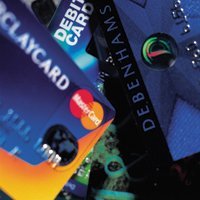
Decision-makers within organisations need to look into the future. As they do so, their thinking should focus on their customers. These should include existing customers and potential customers who have so far not taken up products from that organisation.
In an age when credit is more widely available than ever, this case study focuses on a new product launched by Experian, a global information solutions company which runs one of the UK’s leading credit reference agencies. Experian traditionally deals with business-to-business customers. This case study illustrates how Experian has developed a new product called CreditExpert for consumers.
The company background
Experian operates in more than 60 countries. It has over 20 years of experience in providing financial, statistical and marketing information to businesses and consumers. Building partnerships with companies is Experian’s core business. For example, when banks, credit card companies and other financial services organisations lend money, they need information they can rely on. Lending money involves an element of risk. Experian’s information helps them with the decisions they have to take.
As a credit reference agency (CRA), Experian enables different lenders, such as banks, to share information about their customers’ credit accounts. The lender can then use this information to help it to decide whether somebody can afford to repay any borrowings. It looks at how much credit the customer already has. It also looks at how they are managing this. Lenders pay a fee to the CRA each time they search its records.
Consumers give permission for their credit report information to be looked at when they apply for credit and for their account information to be stored with a CRA. People have a legal right to see the information about them held by a CRA. Experian charges consumers £2, the statutory fee set by the Consumer Credit Act, to provide a copy of the information held on a credit report (sometimes called a credit file). People receiving formal debt counselling receive their credit report free.
Diversification

As organisations develop their businesses, they face a range of choices and opportunities.
One way of representing these choices is through a matrix developed by Igor Ansoff in 1965.
Alternative marketing strategies
By relating product opportunities to markets, this mix identifies four broad alternative marketing strategies open to Experian:
a) Market penetration. This involves selling more existing products to existing markets. This increases the organisation’s market share. Experian is the largest credit reference agency in the UK market and in this field the company has two main competitors.
b) Product development. This means developing new products for existing markets. Experian is a customer-focused organisation. Its customers are businesses. Knowledge of individuals and markets enables Experian to build and develop a wide range of products relevant to its customers.
c) Market development. This strategy takes existing products and finds new markets for them. Experian uses market research to target and develops its markets. Operating in more than 60 countries, Experian used this strategy to become a global leader in the information products market.
Diversification stands apart from the other strategies. It involves the greatest risk of all strategies.
d) Diversification. This involves moving away from core activities and developing new products for new markets. Diversification stands apart from the other strategies. It involves the greatest risk of all strategies. It requires new skills, new techniques and different ways of operating.
In a world where credit is part of modern living, Experian diversified with a new product CreditExpert, launched in 2003. This decision recognised that many consumers wanted to be more in control of their credit status, to be able to monitor their credit report at any time and protect themselves against identity fraud.
The market

Credit for young people often starts when they take out a student loan. Credit, such as personal loans, credit cards or hire purchase agreements, can help smooth out the peaks and troughs of your income. It can help you buy expensive items, such as a car or kitchen equipment, which you would otherwise have to save for. As people settle down they may want to purchase a property. A mortgage is a type of credit that enables them to do this. It is important that consumers manage their finances properly. They do not want a late payment, identity fraud or clerical error to damage their financial status. This might lead to them being refused credit in the future.
What is CreditExpert?
CreditExpert has enabled Experian to target a new market with a new product. Consumers have always been able to apply for their statutory £2 credit report by post by writing to the CRA. More recently they have been able to apply online or by phone and receive this statutory report in the post. But by using CreditExpert consumers can access their credit report online, once they have passed strict authentication and security checks.
Why is a credit report important?

Consumers are wise to monitor their credit history regularly, particularly before they apply for credit. They can ensure that the information held about them is accurate and up-to-date and can check that they have not been targeted by an identity fraudster. For the first time, CreditExpert enables consumers to monitor their creditworthiness online by giving them access to their real-time credit reports. They can look at this as often as they like. Looking at their credit report enables a consumer to know what a financial institution will see when it does a credit check in response to an application for credit. CreditExpert also helps its members to understand how a prospective lender is likely to view the information on their credit reports.
Identity fraud is a serious problem in the UK. This may involve somebody applying for credit in another person’s name. The consumer magazine Which? has revealed that more than one in four people had been affected by identity fraud or knew somebody who had been.
How does it work?
CreditExpert sends its members a text or e-mail, or both, every time there is a significant change to the information on that individual’s credit report. This enables a consumer to verify that a record of a credit check relates to an application they have made for credit. They can also check that any credit accounts opened belong to them and have not been opened by a fraudster using their name and address. CreditExpert members can use a freephone number to get help and advice about the information on their credit reports. They get immediate help from Experian’s free Victims of Fraud service if they find they have been the subject of identity fraud.
Market segmentation
Customers have different needs and wants likes and dislikes. For example, not every person likes the same motor car or has the same taste in clothes. There are many different types of consumers with different types of needs. Experian aims to treat all consumers as individuals. Market segmentation helps to turn marketing into a science. It does this by separating a market into parts called segments. Each segment contains groups of customers who are likely to respond in a particular way to marketing activities. Market segmentation involves three elements. These are:

a) segmentation, in which the market is divided into segments
b) targeting, where an organisation identifies specific segments and provides products and services relevant to those segments
c) positioning, where the strategy uses customers’ views to define the location of a product relative to other products in the market.
Identifying targets
The marketing team at Experian wanted to identify the nature, characteristics and type of consumer who would be interested in CreditExpert. Markets are segmented in a variety of ways. Experian used its knowledge of consumers who had applied for their statutory credit reports in the past to help segmentation. It built up a profile of the consumer it wanted to target. This took into account people’s ages, where they lived, their gender and socioeconomic grouping.
It was important to develop an image that would be appropriate for the product that was being offered.
Experian wanted to attract people with certain characteristics, such as people who were:
- Internet users
- credit users
- keen to manage their financial affairs well.
These were people who might read the financial pages in daily or Sunday newspapers or visit personal finance websites. This profiling helped marketers at Experian to identify which groups they would then target with information about the new CreditExpert service. Experian might be a new name to many individuals in consumer markets.
CreditExpert was a new UK brand. It was important to develop an image that would be appropriate for the product that was being offered. Having a profile of the most likely customer also helped Experian to develop a promotional campaign that would position the product in the minds of its potential customers.
Marketing mix

Experian undertook its market research and identified the segments containing those potential customers that it wanted to target. Next, it developed its marketing strategy. Marketing strategies are developed using the marketing mix. Organisations need to create a successful mix of:
- the right product (or service)
- sold at the right price
- at the right place
- using the most suitable form of promotion.
Product
The CreditExpert service enables members to check online that their credit report is accurate and up to date. It enables them to see their credit history online as often as they want. The CreditExpert alert service helps them to identify whether somebody has been asking for credit using their name and address, which enables them to spot identity fraud. If there is a problem, consumers get free phone advice from credit reference specialists. Members can also order a credit score based on their Experian credit report, which gives them an idea of how a lender would view the information if they were to apply for credit.
Price
As with most financial services, there is a charge. Before making a decision to use CreditExpert, consumers can take up a free trial for a 30-day period. During this time, they have to pay £4.99 to see a credit score. If they are happy with the service, they can use it to help manage their credit history for £5.99 per month. If they do not think the service is for them, they have to remember to cancel their membership at the end of the 30-day free trial. Credit Expert’s unique selling points (USP) are that it allows consumers to see their credit reports online and automatically alerts them to important changes to the information held about them. This helps consumers understand what makes them creditworthy and can help them to manage their credit commitments.
Place

CreditExpert was developed because of the growth in e-commerce communications technology. It’s ‘place’ or channel by which it reaches its users is the electronic medium of the Internet. Experian developed CreditExpert as an e-commerce product to be available online for consumers. There is also a free phone help line. Once you have been verified as a member and have online access to your credit report, you may query any of the information on your credit report by e-mail or phone. The CreditExpert website also includes advice and tools to help members look after their credit history and avoid identity fraud.
Promotion
There are two main categories of promotion:
- above the line
- below the line.
Above-the-line promotion includes traditional forms of advertising such as radio and television. Below-the-line promotion carries a one-off cost. Examples include special offers and exhibitions. Experian has developed a range of different promotional strategies. Each of these was designed to meet its business objectives.
Until recently, Experian worked mainly in the business-to-business (b2b) market. Its expertise was in personal selling. To succeed in the business-to-consumer (b2c) market Experian had to use a different promotional mix.
The results of the marketing mix
Over the last few years, Experian has become increasingly well known to consumers thanks to the consumer education programme on its Learning Zone, which was established in 1996. To succeed in the business-to-consumer (b2c) market Experian had to use a different promotional mix. The programme uses various tools and channels to explain to people what work Experian does, how its credit reference agency operates, what information is held on a credit report and how consumers can see, and if necessary, amend that information. It provides free advice guides for consumers and sponsors events like the Young Consumers of the Year competition, working with partners like Citizens Advice and Trading Standards. The consumer education programme also uses the media (television, radio, newspapers, magazines and the internet) to provide free information and advice about credit and debt to consumers. It takes an exhibition stand to many conferences and events like the Ideal Home Show and the BBC Good Homes Show.
When Experian launched its CreditExpert brand in the UK it had to build on this awareness in order to sell a product to consumers. CreditExpert used a public relations agency to help advertise the new online credit report with press releases and a television advertising campaign. Experian is the official sponsor, of the magazine Credit Today, of Credit Awareness Week 2007, which aims to help consumers understand those credit issues that might confuse them. In order to help people understand the issues surrounding identity fraud, Experian sponsored Bennett Arron, a comedian. His identity was stolen and used by a fraudster. He now uses a stand-up routine to tell people just what being a victim of this fraud feels like and how a monitoring service like CreditExpert can help protect you from the effects of this crime.
Conclusion

A good understanding of the use of modern technology provided Experian with the opportunity to innovate. Experian diversified by building on its statutory credit report service to develop CreditExpert, giving consumers online access to information that they had previously only been able to access on paper. In a world where there is an increasing dependence upon credit, Experian created its CreditExpert brand. This has provided consumers with help in understanding and managing their credit history effectively and safely and helped them guard against identity fraud.
